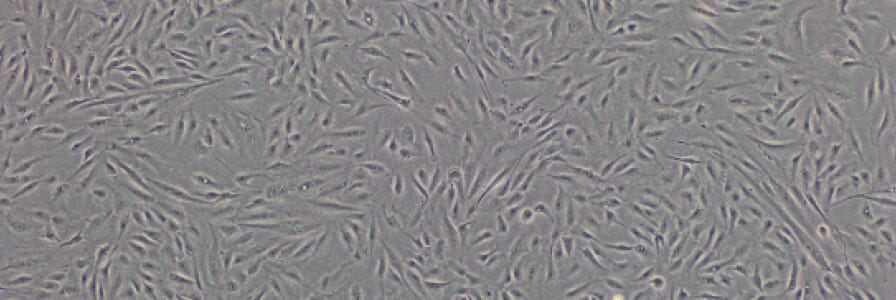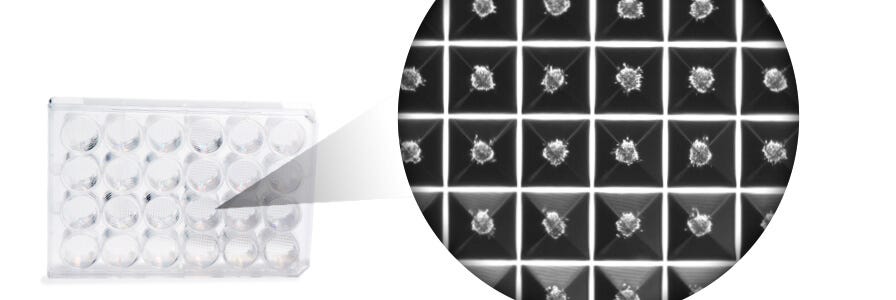Dr. Tomas Gonzalez Fernandez describes his work on incorporating gene and protein delivery to 3D bioprinting strategies for cartilage and bone regeneration
Advancing 3D Bioprinting Strategies for Tissue Engineering
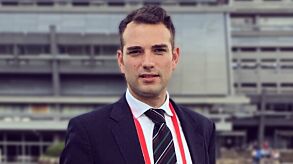
Dr. Tomas Gonzalez Fernandez is a postdoctoral fellow in Prof. Kent Leach’s lab at the University of California, Davis. In 2018, he shared with us a scientific discovery that inspired his own research and received a travel award to attend a conference of his choice. He chose to attend the 5th TERMIS World Congress.
The development of stem cell organoids is one of the most exciting fields of research in the last decade. Organoids are microscopic 3D structures that aim to reproduce the key features of human organs in order to develop new treatments and to better understand molecular and physiological processes.
Dr. Tomas Gonzalez Fernandez, University of California, Davis
Science moves forward when you share it with the world, so we asked Dr. Gonzalez Fernandez to share some information on his own research and on his experience at TERMIS 2018.
The Research: Advanced 3D Bioprinting Strategies for Complex Orthopedic Tissue Engineering
Can you tell us about your research?
After defending my thesis entitled, “Integrating Non-Viral Gene Therapy and 3D Bioprinting for Bone, Cartilage, and Osteochondral Tissue Engineering” in February 2018 at Trinity College Dublin under the supervision of Daniel Kelly and Fergal O’Brien, I moved to the US to start a postdoctoral fellowship in Prof. Kent Leach’s lab at University of California Davis. My PhD focused on the incorporation of gene and protein delivery to 3D bioprinting strategies for cartilage and bone regeneration. Currently I am exploring the use of smart materials for the use of stem cell spheroids as building blocks to repair complex musculoskeletal tissues.
What is the significance of your research?
Musculoskeletal disorders are a leading cause of disability and represent a huge economic and social burden. The ability of the skeletal system to self-repair varies considerably between tissues; the treatment of bone, cartilage, and tendon injuries remains clinically challenging. Due to the limitations of current surgical procedures, tissue engineering approaches using stem cells, biomaterials, and bioactive factors have been explored. These aim to offer tissue substitutes to enhance the repair processes and restore the functionality of the damaged bones and joints. Recently, the use of biofabrication techniques, such 3D bioprinting, has opened the possibility to engineer scaled-up patient-specific tissues of higher clinical relevance, which could help to speed up the translation of novel therapies from bench to bedside.
What tools and techniques do you think are most needed to see your research and other biofabrication research become a reality in the clinic?
For the translation of biofabrication technologies into the clinics there are a few challenges that need to be addressed. In my opinion, two of the determinant factors are the high amount of cells needed for bioprinting (10 - 20 million cells/ml of bioink) and the maintenance of their viability during the printing process. Producing a scaled-up implant for a patient can require many hours of printing, which will have a negative impact on cell viability and could affect the differentiation capacity of MSCs.
Another major limitation is to find materials, i.e. bioinks, that can be printed with high fidelity and, at the same time, allow for cell differentiation, proliferation, and tissue deposition. To solve this issue, many groups, including Prof. Leach's at UC Davis, are exploring the use of smart materials that can facilitate cell-matrix interactions and guide stem cell phenotype.
The conference: 5th TERMIS World Congress, Kyoto, Japan
Why did you choose to attend the 2018 TERMIS World Congress?
The Tissue Engineering and Regenerative Medicine International Society (TERMIS) World Congress represents the gathering of tissue engineers from around the world to showcase their advancements. The congress is held only once every three years. It is the highlight of the year for researchers in the field of tissue engineering and regeneration to present their work, learn about the new hot topics in the field and network with other researchers and biomedical companies. Therefore, this meeting offered the ideal opportunity to present my research to an international audience and deepen my insight of the current limitations and opportunities in the field. And, as an aspiring academic, the experiences and connections made at TERMIS 2018 will be of great importance for the current stage of my career.
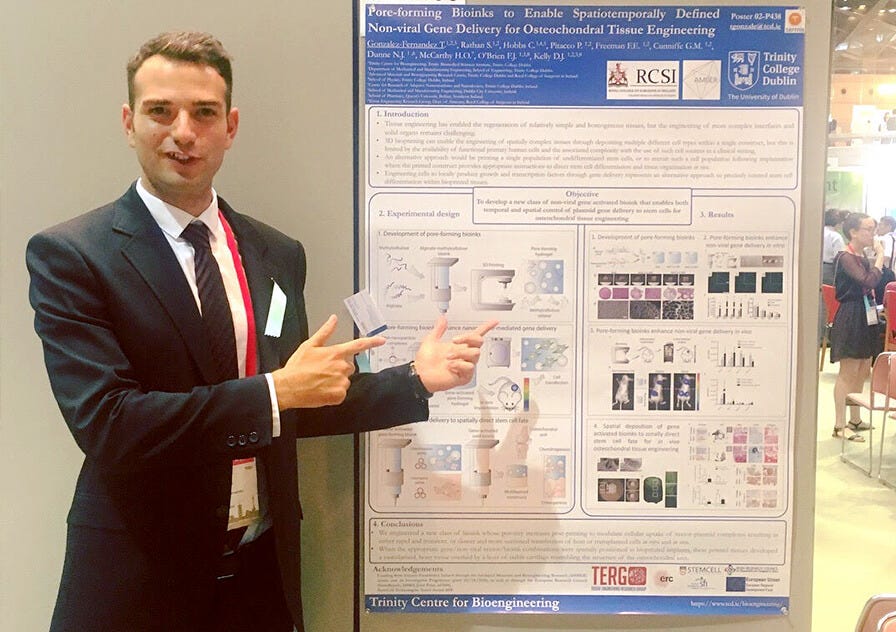
Dr. Gonzalez Fernandez Presenting a Poster at the 2018 TERMIS World Congress
Can you tell us about your favorite presentations at the conference?
My main research interest is how to increase the functionality of biomaterials to enhance cellular response and guide the regeneration process. One of the sessions I enjoyed the most was the “Electroactive Biomaterials and Electrostimulation in TERM Applications” of which I was co-chair. It gave me a really good view of the application of bioelectronics to the repair of diverse tissues.
In addition, I really enjoyed discovering the high-quality research developed by the Japanese groups and specifically the Kenzan 3D printing technology that aims to use cell aggregates as building blocks to create mature tissues in the lab that could be implanted into patients.
Also, the plenary talk by Prof. Gordana Vunjak-Novakovic about the use of organ-on-a-chip technologies was really interesting.
How has attending this conference inspired you or affected your current research?
Attending the 2018 TERMIS World Congress was an amazing experience. It helped me to reflect about my current research and find new approaches to make it more impactful. For example, it helped me to realize the potential of my current work with stem cell aggregates and that it is important to tailor the stem cell environment to increase cell functionality and responsiveness to different types of stimuli. Moreover, thanks to the contacts made at this conference and the great scientific discussions I had with other researchers, I have a clearer idea of the next steps in my career to become an independent researcher.
A Word of Advice: Attend More Conferences
What advice do you have for the next generation of scientists?
I think that the most important advice I could give to someone willing to get into science would be to go to as many conferences and international meetings as possible, to open up their minds to new research approaches and collaborations. And that you have to fight and work hard to get funding to attend these conferences. And never give up applying for travel awards and other prizes; there will always be institutions and companies, such as STEMCELL Technologies, that will recognize the effort of talented and driven scientists.
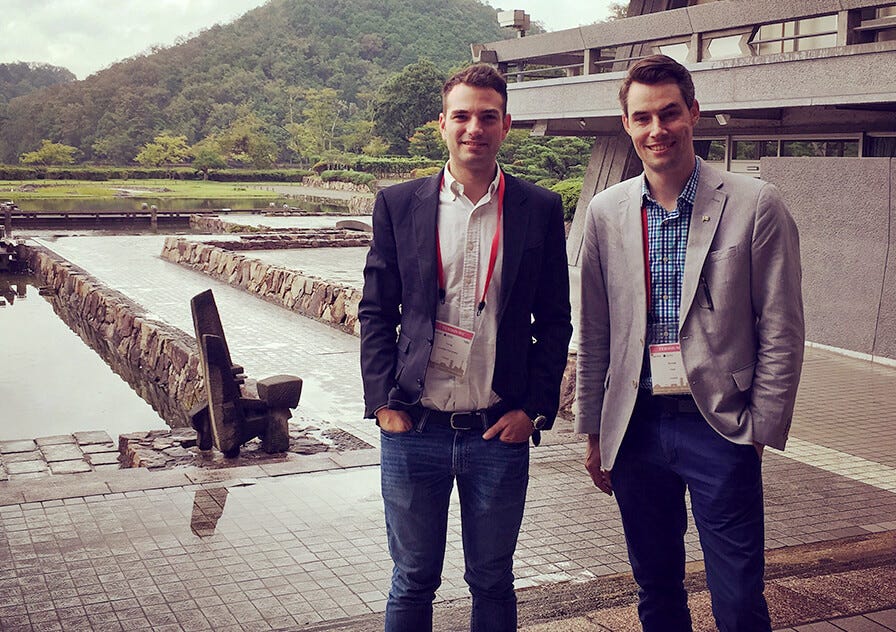
Dr. Gonzalez Fernandez and Dr. Hiatt at the 2018 TERMIS World Congress
Lastly, I would like to thank STEMCELL Technologies for their travel award. It was the determining factor for me to go to Japan for this conference. I had the incredible luck to meet up with their product developer Michael Hiatt with whom I had a really interesting scientific discussion about stem cell spheroids, novel methods for their production, and their importance in tissue engineering.
Related Resources
Derive and Expand Human MSCs
Mesenchymal stromal cells (MSCs) have demonstrated the capacity to contribute to tissue engineering and regeneration. MSCs can be derived and expanded using animal component-free medium MesenCult™ ACF-Plus.
Reproducible 3D Spheroid Production
3D Spheroids are used in cancer research, drug discovery, tissue engineering, and more. Learn more about how AggreWell™ can reproducibly generate large numbers of uniform and size-controlled spheroids for your research.
Request Pricing
Thank you for your interest in this product. Please provide us with your contact information and your local representative will contact you with a customized quote. Where appropriate, they can also assist you with a(n):
Estimated delivery time for your area
Product sample or exclusive offer
In-lab demonstration
